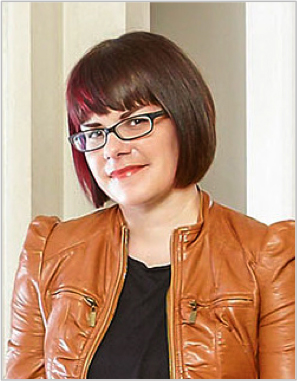
Interview with Rebecca Long, curator of Doctrine and Devotion
| May 20, 2016 | |
| Art of the Spanish Americas |
Rebecca Long, curator of Doctrine and Devotion: Art of the Religious Orders in the Spanish Andes at the Art Institute of Chicago, talks with the Thoma Foundation about the artworks that inspired this new exhibition of Spanish Colonial art at the Art Institute, iconography, and the exchange of images and ideas across the Atlantic.
Rebecca Long is the Patrick G. and Shirley W. Ryan Associate Curator in the Department of Medieval to Modern European Painting and Sculpture at the Art Institute of Chicago. She is a specialist in the art of 16th- and 17th Spain and Italy, and received her Ph.D. from New York University’s Institute of Fine Arts in 2015 with a dissertation on Bartolomé Carducho and the role of Italian artists in the Spanish court during the Renaissance.
Photo courtesy of the Art Institute of Chicago.
THOMA FOUNDATION: How did you develop the topic for this exhibition?
LONG: I started from the painting of the Genealogical Tree of the Mercedarian Order. It’s such a beautiful and interesting painting, and one that I thought would catch visitors’ attention because of the rather unusual iconography. From there I thought about how to work outward from that painting to create a narrative, and decided to explore images created by or related to the different religious orders active in South America in the 17th through 19th centuries.
THOMA FOUNDATION: What themes do you highlight in this exhibition?
LONG: Several topics are teased out through the paintings included in the exhibition: who the different religious orders were, what the devotions and iconographies they promoted were, as well as broader concepts like the ways in which images can be used to focus a believer’s prayers, and how images can be used to instruct.
THOMA FOUNDATION: How does Doctrine and Devotion relate to A Voyage to South America, the previous exhibition of Spanish Colonial art in this space?
LONG: At the most basic level, the works in this exhibition come from the same historical and geographical moment as those featured in A Voyage to South America, which highlighted histories of individuals embedded in the works of art.
Several of those histories can also be linked to the religious orders highlighted in Doctrine and Devotion because of the important roles these figures played in the social fabric of viceregal Peru. For example, the individuals portrayed in the painting of the Allegory of Faith, featured in A Voyage to South America, Baltasar Ramos and his wife, had a connection to the Dominican order — the painting includes Dominican saints, and Ramos and his wife are holding rosaries, indicating their participation in a devotional practice that was promoted by the Dominicans.
Doctrine and Devotion also continues our efforts to illustrate the connections and exchanges between South America and Europe, in part through its placement in the middle of the galleries devoted to European art where A Voyage to South America was on view previously.
THOMA FOUNDATION: How does this exhibition relate to the Art Institute’s permanent collection?
LONG: The placement of Doctrine and Devotion in the middle of the suite of galleries devoted to European art was an important choice. Visitors to the exhibition who have come through the European galleries will be able to see the ways in which these South American paintings speak to their European cousins.The Christian iconography highlighted in this exhibition is a byproduct of the European presence in the New World and is therefore linked to the galleries of Spanish and Italian art next door. More importantly, however, the exhibition reveals the unique stylistic and iconographical characteristics of works of art from South America.
THOMA FOUNDATION: What do you hope visitors take away from this exhibition?
LONG: On a basic level, I hope that visitors to the exhibition learn about these different religious orders, and what devotions, themes, and ideas were important to them. Above all I hope that our visitors deepen their awareness and understanding of the range of wonderful artwork that was produced in South America in order to build upon the knowledge of this work that was introduced in A Voyage to South America.
Doctrine and Devotion is on view at the Art Institute of Chicago through June 25, 2017. More information at /doctrine-and-devotion/.
